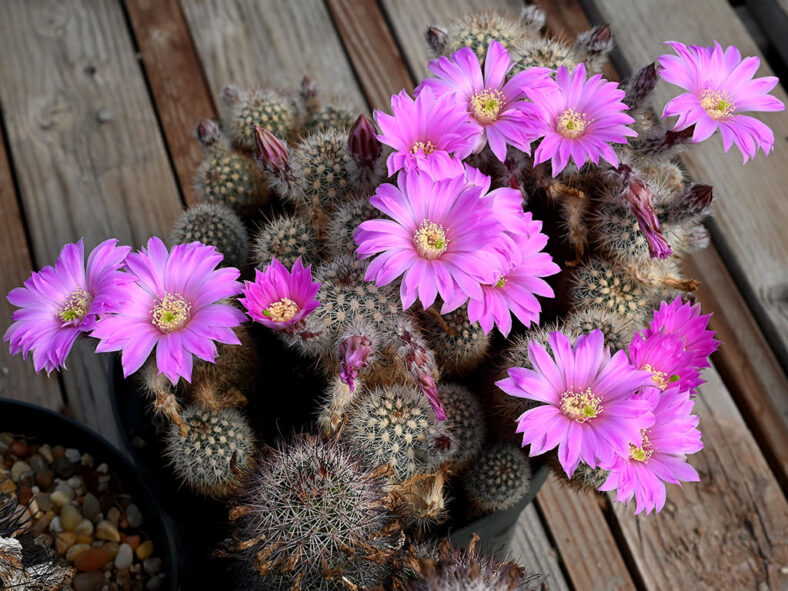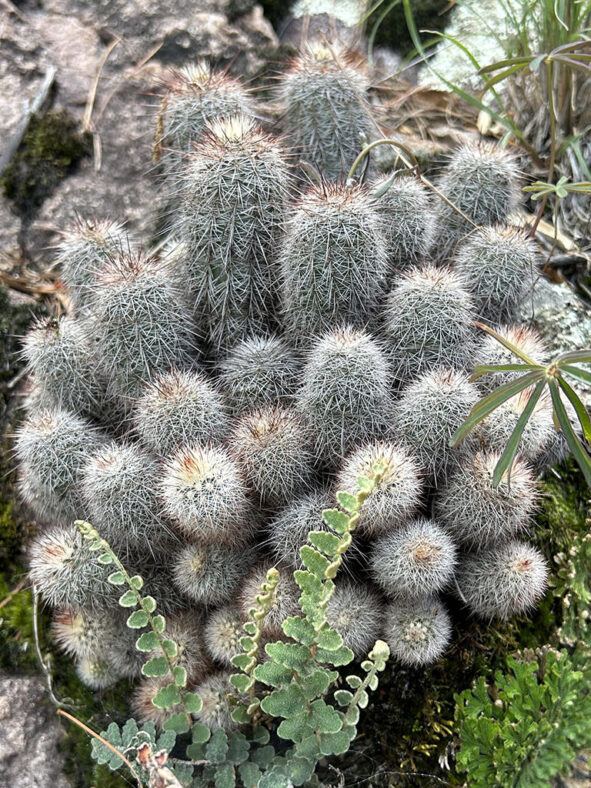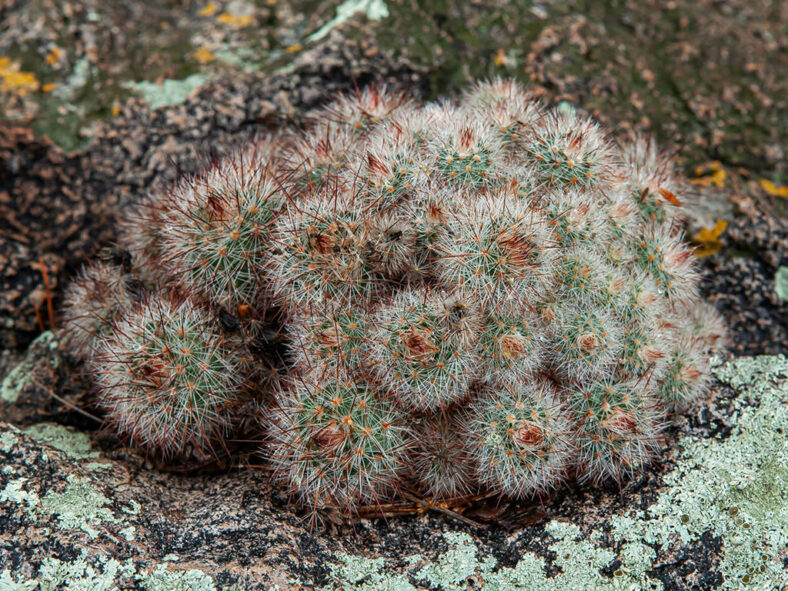Echinocereus laui is a stunning, small, clump-forming cactus. It blooms profusely, often producing many flowers even at a young age.
Scientific Name
Echinocereus laui G.Frank
Scientific Classification
Family: Cactaceae
Subfamily: Cactoideae
Tribe: Pachycereeae
Genus: Echinocereus
Etymology
The specific epithet "laui" (pronounced "LAU-eye") honors Alfred Bernhard Lau (1928-2007), a German missionary and plant collector in Mexico, who discovered this species.
Origin
Echinocereus laui is native to Mexico. It grows in oak forests, on rock outcrops, and in grasslands in eastern Sonora and western Chihuahua, within the Sierra Madre Occidental, at elevations ranging from 4,860 to 5,910 feet (1,480 to 1,800 m).
Description
Echinocereus laui is a small cactus with green, cylindrical stems that typically have 14 to 16 low ribs lined with dense clusters of spines. It offsets profusely from the base, forming a lovely clump over time. The stems can grow up to 4 inches (10 cm) tall and reach a diameter of 1.6 inches (4 cm). Each areole bears four reddish-brown central spines and 18 to 21 white, bristle-like radial spines. The central spines can grow 1.2 inches long, while the radial spines can measure as much as 0.4 inches (1 cm) long.
In the spring, Echinocereus laui produces beautiful funnel-shaped flowers near the tips of the stems. The flowers vary in color from pink to violet and can reach lengths of 2.4 inches (6 cm) and diameters of 2.8 inches (7 cm). The fruits are spherical, brownish-green, and covered with wool and thin brown spines. Inside, they contain white pulp and black seeds.

How to Grow and Care for Echinocereus laui
Light: Although it can tolerate partial shade, Echinocereus laui thrives in full sun. If growing indoors, place it in a sunny window and rotate the pot a quarter turn every week or two to ensure balanced growth. If possible, move the plant outdoors from spring to fall.
Soil: Good drainage is essential for the health of this cactus, as it does not like to have "wet feet." Use well-draining commercial soil mixes designed for cacti or make your own.
Hardiness: Echinocereus laui prefers warmer temperatures during its growing season and cooler temperatures during winter when it is dormant. It grows best in USDA Plant Hardiness Zones 9b to 11b, with average minimum winter temperatures ranging from 25°F to 50°F (- 3.9°C to 10°C).
Watering: Water thoroughly from spring to fall, allowing the soil to dry out between waterings. Gradually reduce the watering frequency in the fall. When the plant is dormant in winter, water it only enough to prevent it from shrinking.
Fertilizing: For optimal growth, use water-soluble fertilizer diluted to 1/4 strength, ideally a balanced 10-10-10 formula. Do not fertilize in the winter.
Repotting: When young, repot Echinocereus laui each year in early spring. Once mature, repot it only when it outgrows its pot.
Propagation: This cactus can be propagated either by offsets or seeds. The best time to remove offsets is spring and summer, while late spring and early summer are ideal for sowing seeds.
Learn more at How to Grow and Care for Echinocereus.
Toxicity of Echinocereus laui
Echinocereus laui is considered non-toxic to humans and animals.
Links
- Back to genus Echinocereus
- Succupedia: Browse succulents by Scientific Name, Common Name, Genus, Family, USDA Hardiness Zone, Origin, or cacti by Genus
Photo Gallery
Click on a photo to see a larger version.


